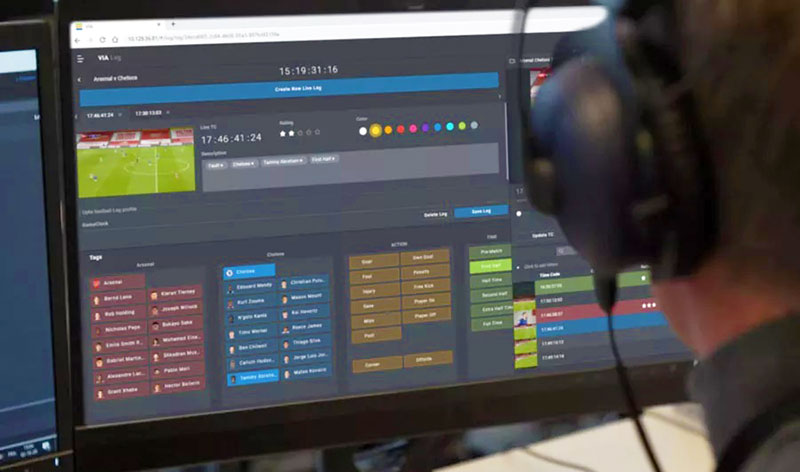EVS’ new Media Asset Platform and end-to-end management system, connects the capabilities of EVS products and services to make the most efficient use of people and content.

EVS VIA MAP Version 1.0 is a Media Asset Platform, designed and built to serve as an integrated environment supporting the content lifecycle. Starting with live acquisition and story creation, the platform’s software handles production and post-production, and through to distribution and monetisation.
“As we are typically the first to touch the content, we are in the right position from which to build an end-to-end management system,” said Mike Shore, EVS SVP Asset Management Solutions. "Organisations can use the VIA MAP platform to combine the capabilities of our products in order to make the most efficient use of people and content. In particular, users can determine how best to cope with the time sensitive demands and daily workloads encountered at modern media organisations.”
Through a HTML5 web interface, users can access VIA MAP’s line up of Core and Creative applications, each of which is finely tuned for a specific function such as baseband ingest, file import, advanced editing, content metadata enrichment and management, archiving and so on.
The platform's ability to unify EVS systems, services and functionality is evident through the connections it enables, and these will increase over time.
VIA MAP and MediaHub – Enhancing Content Value
For instance, by integrating EVS’ MediaHub, a cloud-based content exchange service for live events, VIA MAP directly connects live production with content distribution and monetisation. Mediahub publishes and distributes non-linear, live and near-live content with rights holders online, and has media functions addressing their digital and broadcast production requirements. In effect, it means content owners can virtualise the physical infrastructure of an IBC, and use it to monetise content while preserving the quality and usefulness of onsite deployments.

Mediahub can also directly integrate multiple sources into one pool of content based on AI tagging and metadata generation, allowing users to playback, browse and trim content from anywhere. This integration with VIA MAP works as a self-service, on-demand content portal, increasing the value of content through its accessibility to rights holders, partners or multi-site teams. Enriched with metadata, the content can be searched and delivered in real-time, taking advantage of distributed logging operations – human, AI or a combination of both.
VIA MAP and LiveCeption – Connecting Operators, Producers and Editors
Used with LiveCeption, VIA MAP supports real-time collaboration between live production and post-production teams, using content more efficiently. A number of operators and editors can simultaneously contribute to the same production, browse and edit content in place – as it is being recorded – and only output relevant segments as needed, such as when delivering to social media.
The continuous addition of metadata to the content by all those involved in a production, including producers, logging and replay operators and editors, allows all users to find, browse and select the best clips in real time more easily. For example, replay operators can efficiently access the VIA MAP platform directly from their positions to search and find craft-edited assets that have been prepared them for play to air.
In this case the platform serves as a bridge, unifying disparate production teams – regardless of location – to accelerate the preparation and delivery of media content through the entire production chain.
VIA MAP and MediaInfra – Controlling Workflows
VIA MAP also takes advantage of EVS’ MediaInfra systems, supporting users with an IP-based backbone in live video operations through routing, monitoring, orchestrating and media processing workflows. When used on top of Cerebrum, for instance, VIA MAP handles router control and automation.
Cerebrum allows workflows – SDI, IP or hybrid – to be configured in a central multilevel router, controllable and compatible with most protocols like NMOS, SDP and Ember+. As a result, production teams are less subject to delays, depend less on other departments and can increase their own efficiency. evs.com




















